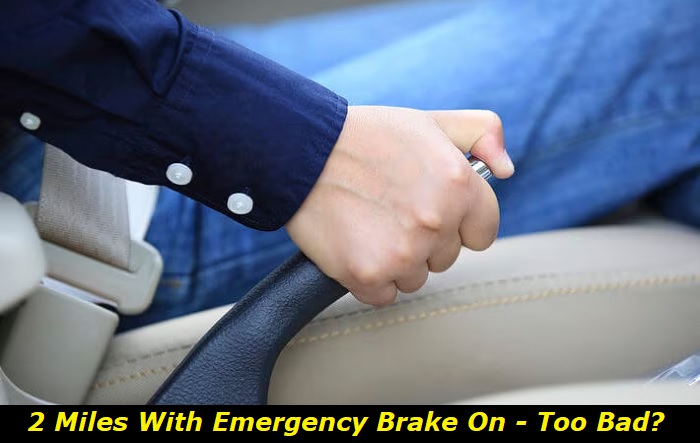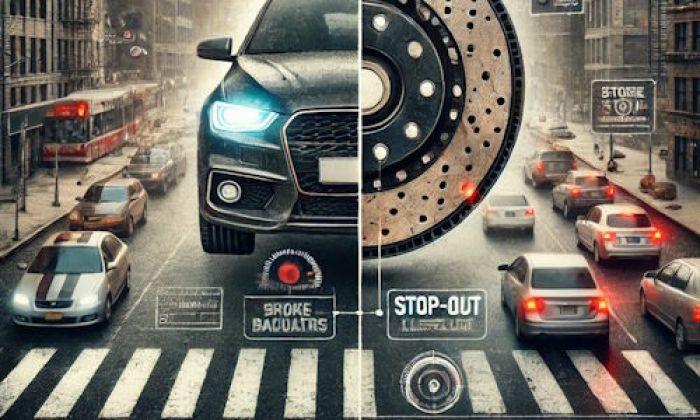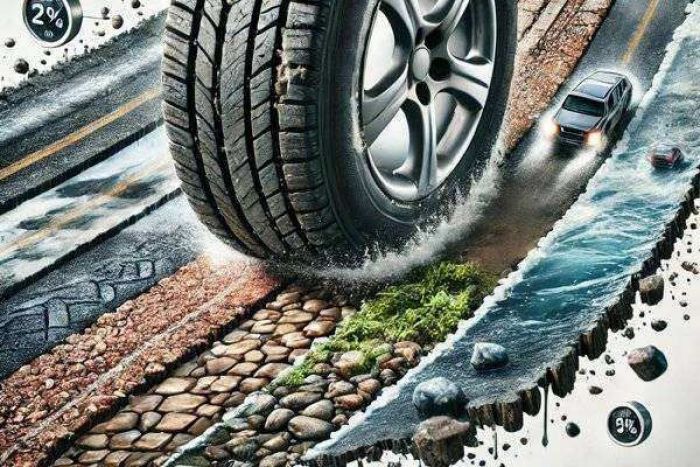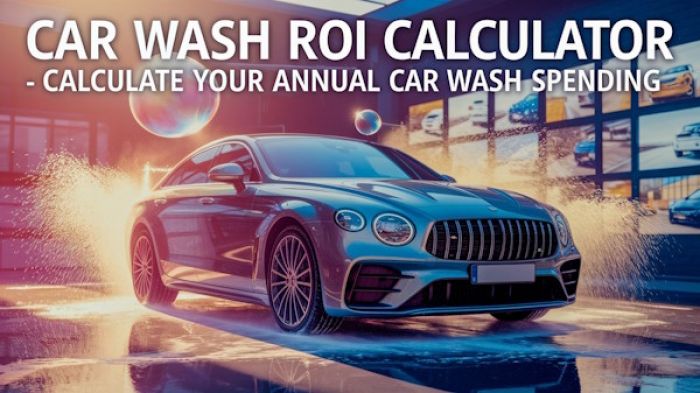Hill parking is one of the most challenging things any driver can experience. You wouldn't be sure if you'll find your car where you left it when you return. It might have rolled away. And since no one wants to pose a danger to other road users and pedestrians when their vehicle rolls away in their absence, you'll be happy to know that every automobile is built with an emergency, also called a parking brake system.
Parking brake problems highlights
- Level of urgency:medium
- DIY diagnostics:possible but complicated
- DIY repairs:impossible
- Price for repair:$100 - $450
- Common symptoms:locked wheels, car rolling
- Commonreasons:EPB problems, rear pads issues, parking brake system problems
- If ignored:no parking brake, rolling back, dangerous situations

What is the Emergency Brake, and How Does it Work?
The emergency brake is a braking system that operates independently of the primary braking system. Also known as parking or hand brake, the emergency brake was initially designed to be used when the primary braking system of your car failed.
In modern cars, the emergency braking system isn't designed with enough stopping power to bring a vehicle to a stop. It has since remained a parking brake for many. It is only applied when a person parks the car.
When applied, the emergency brakes bypass the hydraulic system of your primary brakes to lock the wheels. It uses a mechanical system of cables attached to the emergency brake lever. If your car uses drum brakes and you engage the emergency brake, the cables engage another lever that exerts pressure on the shoes, thus holding the vehicle in place.
The mechanism uses a corkscrew system if you are driving a vehicle with disc brakes. When you engage the parking brake, this corkscrew pushes a piston into the brake pads, which holds your truck in place.
What if I Drove 2 Miles with the Emergency Brake On?
Leaving the emergency brakes engaged and driving away is a mistake anyone can make. This often happens if you're not used to applying the parking brake or are using a new or someone else's car.
If you are wondering whether driving with emergency brakes engaged is dangerous, the response will depend on several factors. If you drive for a short distance, the effects will be minimal and probably require no repairs. However, if you were moving at high speed, even a short distance could cause damage.
The first problem you'll notice if you drive with the emergency brake engaged is the lack of power. Your vehicle will struggle to move forward. It'll be like holding the brakes and trying to peddle a bicycle.
Another issue that will make you notice that your emergency brake is engaged is when you begin to smell a distinct burning odor. However, this will not occur if you just drove for two miles.
Did I Ruin my Brakes?
Driving with the emergency brake engaged is not easy. For the most part, you won't cause any damage worth worrying about if you drive with the emergency brake engaged. Mainly, you will experience difficulty moving, causing you to stop and check the problem. However, if you keep pushing, the damage you cause will depend on how far and fast you go. A two-mile drive won't cause severe problems.
When you drive with the parking brake applied, the brake pad and rotors create a lot of friction, generating heat. The friction and heat produced could harm your brakes if you move faster, even for a short distance.
Driving for long with the emergency brake engaged poses more danger to the brakes. Sometimes the heat produced could be transferred to the brake fluid, which could boil in extreme conditions.
Signs that my Brakes Need Replacement
Although driving with the emergency brake engaged for two miles couldn't leave any severe damage, it could escalate an existing problem with your brakes to warrant a replacement.
One of the most noticeable signs that you need to replace your brake is if they feel spongy when you apply them. If you replace them but still experience a spongy problem, you should check the fluid and the brake lines. The fluid might have been damaged due to the heat produced by friction. Check to ensure the brake lines don't have air.
Excessive heat could also cause damage to the brake pads. A sure sign that you need to replace the brake pads is when the brake pedal pulsates or bounces when you press it down.
What Could Happen if I Drive With the Emergency Brake On?
Irrespective of the type of emergency brake your car has, driving with the parking brake engaged creates the same problems, as listed below.
1) Burning Odor
If you're rolling down the road with the emergency brake applied, your vehicle will not have enough power to accelerate. You may notice a burning smell, especially if you drive long with the parking brake on. The burning odor is created by the friction the rotors and brake pads create.
However, although this is a sign that your emergency brake is engaged, it doesn't tell you the damage it could cause to your vehicle's braking system.
2) Glazing the Brakes
This is one of the common signs of driving with applied emergency brakes. After the brakes cool down from the overheating created by the excessive friction, they create a glaze over the brake drums, the rotors, and the brake pads. This makes the brake surface slicker than it usually should be, thus reducing the braking power of your vehicle.
Depending on how bad the situation is, braking normally for a while could eliminate the glazing problem, eventually restoring your brakes' stopping power. However, if the effect caused a lot of damage, you might need to replace the rotors, the brake pads, and the drums.
3) It Could Tamper With the E-Brake Cable
There's a fine adjustment where your brake cable connects with the brake lever. The emergency brake function off this adjustment to the point that a slight misadjustment could affect the practical operation of the parking brake.
If the adjustment becomes too tight, the emergency brake won't fully disengage when you want to drive away. If the adjustment is too loose, the parking brake won't fully engage when applied.
Driving with the emergency brake applied, even for around two miles, could throw this adjustment off balance. The friction wears down the brake pads, which loosens the brake cable adjustment.
When this happens, you only need to readjust it to ensure your emergency brake has the proper stopping power when you need it.
4) Possible Fire
This is not a case of driving two miles with emergency brakes engaged. However, if you drive too fast or a long distance in this condition, the excessive heat produced by the friction could turn into fire. It is probably a worst-case scenario, but it could happen. You probably wouldn't want to deal with fire in the middle of the road, so you should check your vehicle when you smell a burning odor.
If It's this Dangerous, Why Does the Car Move with the Emergency Brake On?
You could wonder, if driving with the emergency brake engaged is this dangerous, why does the vehicle allow you to do it anyway?
The truth about this issue is that the emergency braking system was initially designed to serve as an alternative brake when the primary option failed. Although that isn't the case with modern automobiles, the parking brake system does come to your rescue when your brakes fail. It won't be delightful, but it is better than rolling down the hill road with no brakes.
Another reason why the car allows you to drive with the emergency brake applied is that it makes drifting easy. This might not be a fundamental reason, but if the emergency brake held firm and couldn't allow the wheels to spin, drifting could be an impossibility. Car drifting can be a blast if you learn to do it well.
Conclusion
It is good to constantly engage your emergency brakes when you leave your vehicle parked. It increases its stability and reduces the chances of the car rolling away in case another vehicle hits it from behind when parked.
Although doing it for long is dangerous, occasional driving with this brake engaged keeps it in good working condition. If you don't use the emergency brake for long, it could rust and be useless when needed.
It would be best if you learned how to use your parking brake system sufficiently so that it can be of help when you need it. It is also essential to always check whether the emergency brake is engaged before driving off, especially if your vehicle was at a car wash or service center or someone else was driving it before you.
About the authors
The CarAraC research team is composed of seasoned auto mechanics and automotive industry professionals, including individuals with advanced degrees and certifications in their field. Our team members boast prestigious credentials, reflecting their extensive knowledge and skills. These qualifications include: IMI: Institute of the Motor Industry, ASE-Certified Master Automobile Technicians; Coventry University, Graduate of MA in Automotive Journalism; Politecnico di Torino, Italy, MS Automotive Engineering; Ss. Cyril and Methodius University in Skopje, Mechanical University in Skopje; TOC Automotive College; DHA Suffa University, Department of Mechanical Engineering






Add comment